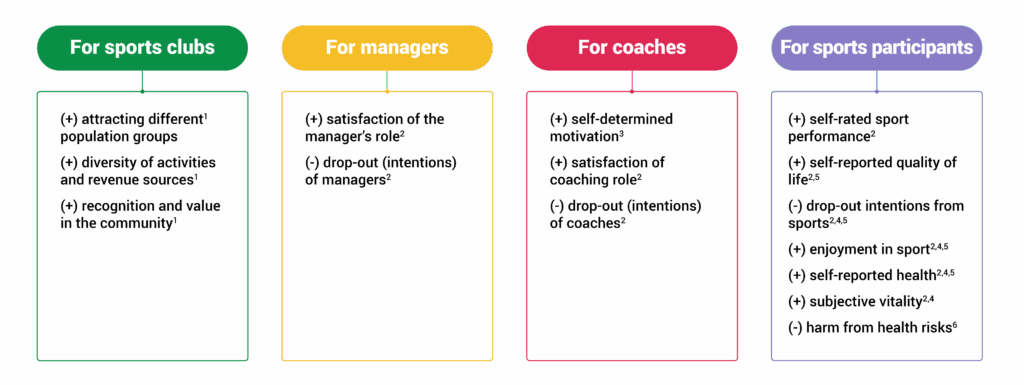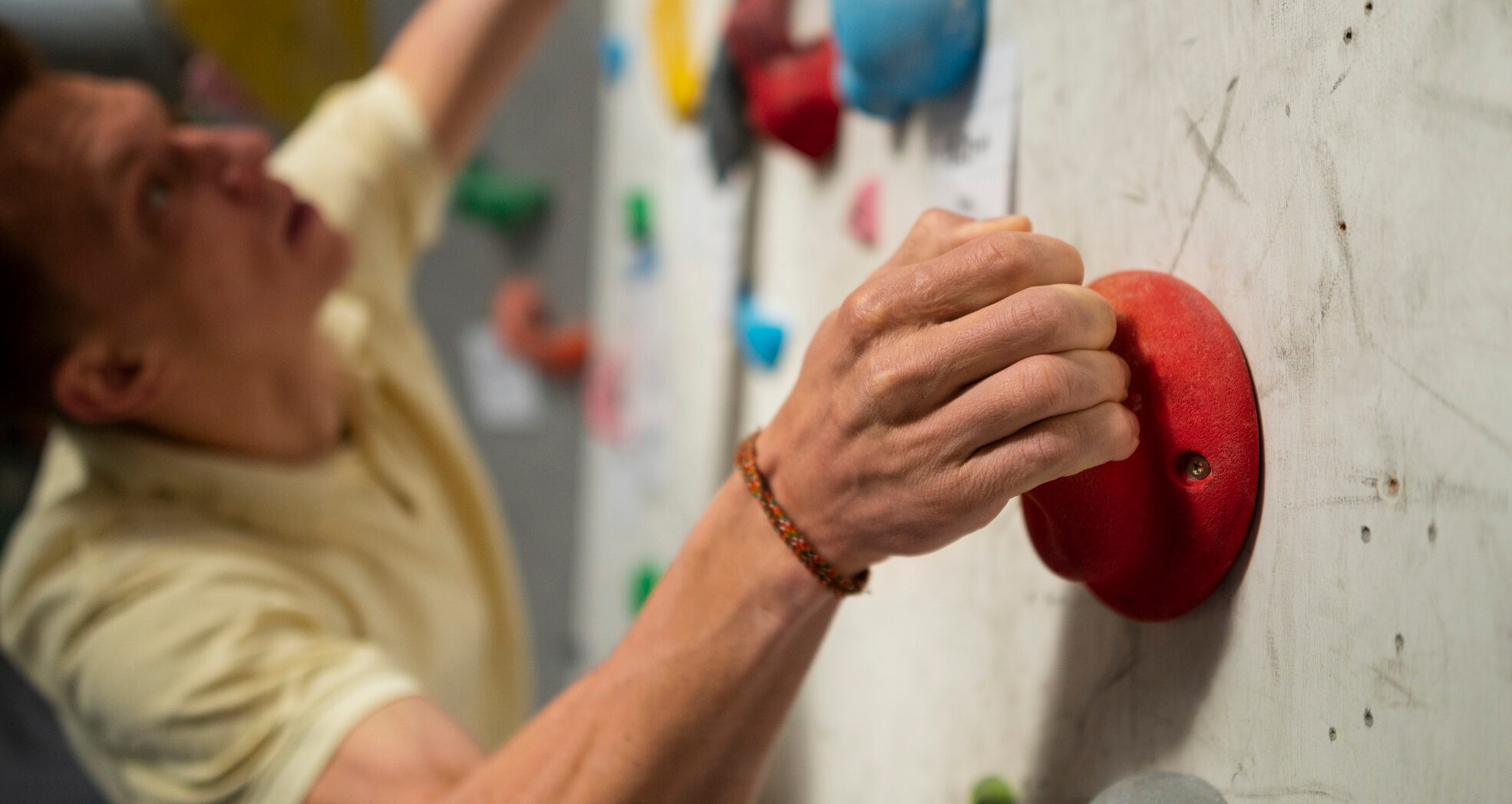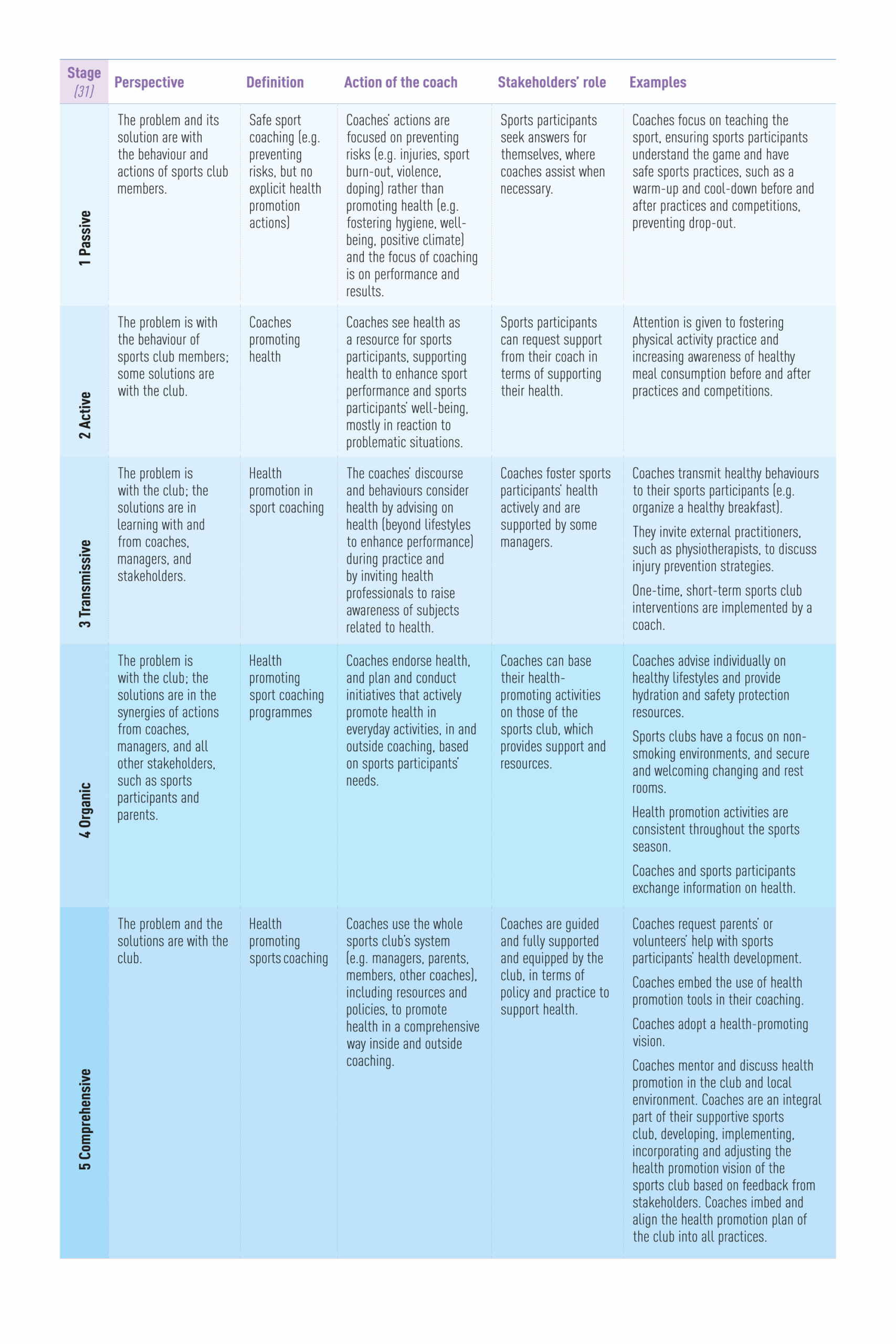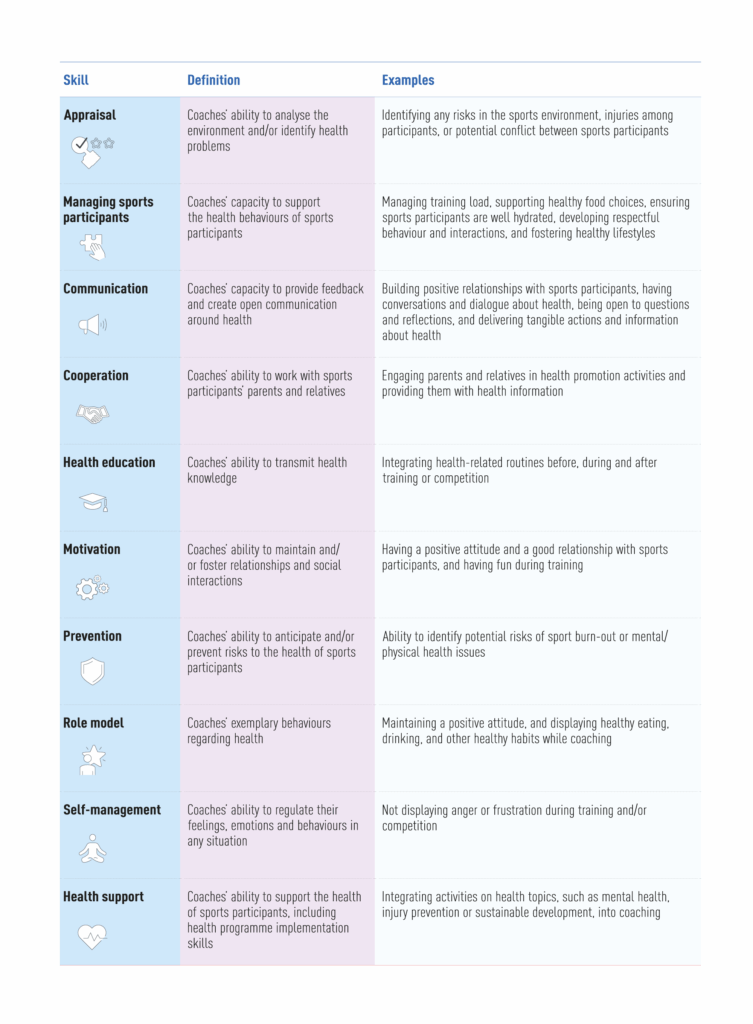The theory
Benefits of HPSC
Promoting health in sports clubs has benefits for multiple sport stakeholders, not limited to sports participants. Having a sports federation and affiliated clubs that care about stakeholder and club members’ health, helps to enhance sport performance of high-level athletes, foster grassroots sports participation and enjoyment, and thus leads to a greater retention of participants, coaches and managers. If members feel that their health and well-being is valued and fostered, they will be more eager to invest their resources into enhancing the club’s capacity to promote health, creating a virtuous circle (Lane, Murphy, Regan, & Callaghan, 2021).

Benefits of health promoting sports clubs
The settings-based approach
The Ottawa Charter (WHO, 1986) defined health promotion (HP) as “the process of enabling people to increase control over and improve their health. To reach a state of complete physical, mental and social well-being, an individual or group must be able to identify and to realize aspirations, to satisfy needs, and to change or cope with the environment.”
By adopting this definition, health is seen as a resource for everyday life, not the objective of living. Health is a positive concept emphasising social and personal resources, as well as physical capacities (WHO, 1986). Good health is perceived as a major resource for social, economic and personal development that goes beyond healthy lifestyles to encompass well-being which is not solely the responsibility of the health sector.
To implement this definition, the settings-based approach has been promoted by the World Health Organization, where a settings is “a place or social context where people engage in daily activities in which environmental, organisational and personal factors interact to affect health and well-being” (Nutbeam, 1998).
The settings-based approach has been successfully implemented among schools (Lee, Tsang, Lee, & To, 2003) and cities (De Leeuw, 2009), where a health-promoting school has been described as “a school that is constantly strengthening its capacity as a healthy setting for living, learning and working”
Health Promoting Sports Clubs Model
A theoretical framework (see Figure 1 for details) has been developed, evolving the HPSC concept into a HPSC model which defines seven levels of stakeholders supporting the development of four health determinants (i.e., organizational, social, environmental and economic determinants). Four of these levels operates within sports clubs: 1) the individual level (personal characteristics and behaviours of sport participants in terms of physical, mental, and social health), 2) the micro-level (activities of coaches and team managers, including volunteers responsible for a team, to influence sport participants health behaviours), 3) the meso-level (activities of club managers, i.e., executive board members, to guide, modify or support HP actions of coaches and athletes/players at the micro- and individual level) and 4) the macro-level (overall club HP policies and direction to guide, modify or support HP actions at the lower levels, defined by club board). In addition to these internal levels, there are three external interacting with and influencing the club: 1) government authorities (government-led initiatives at national to local levels to invest in HP within sports clubs), 2) public health actors (guidance and support for HP development within sports clubs), and 3) sports federations (policies, regulations and support from sports federations to affiliated clubs to implement HP).

Definition of the Health Promoting Sports Coach
The European Sport Coaching Framework defines sport coaching as “a process of guided improvement and development in a single sport and at identifiable stages of development” (27). This definition acknowledges the process rather than just an activity, outcome or short-term focus of coaching. The Framework also emphasizes the importance for coaches to be part of the sports system, which can support their development and coaching practice.
A health-promoting sports coach is defined as a coach that actively engages with the sports system, utilizing their expertise, skills and knowledge to promote health and well-being among sports participants and stakeholders.

Based on this definition, three key principles are outlined:
Connect with the system
Connect with the broader sports system and club environment through cooperation, training, and management and club board support.
Adopt a coaching philosophy
Adopt a philosophy of health promotion, which is considered a key aspect for coherent and robust coaching (28, 29), where health is seen both as a process for sports participant development or performance and as a value at the centre of coaching which guides coaches’ behaviours.
Be sports participant-centred
Be sports participant-centred, which is critical for a positive sport experience, for the flourishing of and respect for the integrity and individuality of sports participants (30).

Stages of becoming an HPSCoach

To guide sports organisations and practitioners towards health promotion, stages of progression have been developed guiding coaches to go from a passive to a comprehensive health promoting sports coach (Table 2). These stages may be dependent on support from the sports system, being internal to the club (e.g. management, board of directors, other coaches, parents) or from external stakeholders (e.g. local nongovernmental organisations, policy-makers, sponsors).
HPSCoach Skills
Ten skills have been identified as key attributes of health promoting sports coaches. These skills interact and are closely linked with what the coach does, says and offers.


